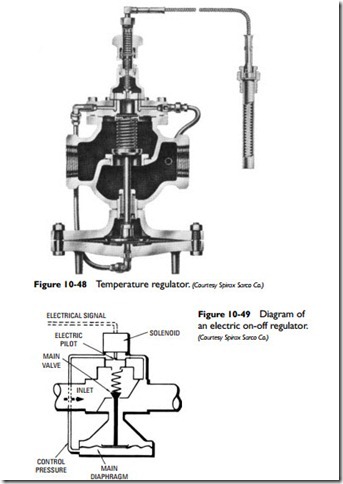Electric Control Valves (Regulators)
An electric control valve (regulator) is designed to provide remote electric on-off control in heating systems and steam process applications (see Figure 10-49).
The solenoid pilot at the top of the valve is connected to a room thermostat, automatic time clock, or some similar device from which it can receive an electrical signal. When the solenoid pilot is electrically energized, the pilot valve opens, and pressure builds up in the diaphragm chamber. As a result, control pressure is applied to the bottom of the main valve diaphragm, and the main valve is opened. The pilot valve closes when the solenoid pilot is de-energized, and control pressure is relieved through the bleed orifice. Steam pressure acting in conjunction with the force of the main valve-return spring combine to close the main valve.
